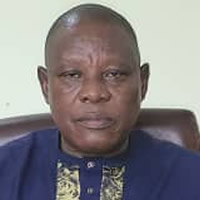Vulnerability
Introduction
Persons with disability (PWDs) are defined as those who are unable to or are restricted in the performance of specific tasks/activities due to loss of function of some part of the body as a result of impairment or malformation (UN Population Handbook, 2013). Estimates from the World Health Organisation (WHO) has it that there are more than 600 million PWDs in the world, of which approximately 80 percent live in low-income countries (Ayiku, 2012).This chapter analyses PWDs in the Tatale-Sanguli District in relation to other socio-economic issues.
Population with Disability
From Table 6.1, out of the population of 60,039 in the Tatale-Sanguli district, 736 are persons with disability; representing 1.2 percent of the district’s population. The proportion of the male population with disability is almost the same as that of females (1.3%). The commonest disability in the district is sight, which affects 38.3 percent of all disabled persons in the district. This is followed by people with physical disability (28.3%), hearing (26.4%), speech (17.5%) emotional (11.5%) and intellectual disability (11.3%). The pattern is repeated among both males and females. Apart from sight disability where female proportion is a little higher than males’ (39.2% against 37.4%), males proportions are higher in all other disability types.
Distribution by Type of Locality
Table 6.1 also shows disabilities in the district by type of locality. The commonest disability type in the urban areas is physical disability, which affects 40.0 percent of the total disabled population whiles sight disability is the commonest disability type in the rural areas affecting a similar proportion (40.1%) of the disabled population. In all the remaining disability types, rural proportions are higher than urban ones. A similar pattern is repeated among the males and females. However, in almost all the disability types, male proportions are higher than females.
Disability by Economic Activity
Table 6.2 shows disability by economic activity status of persons 15 years and older in the Tatale-Sanguli District. The table shows that the total population of persons 15 years and older is 32,437 and out of this, persons with disability in the district are 515. The disabled population that is employed is 320, representing 62.1 percent. The proportion of the disabled that is unemployed is (1.2%). The proportion of the disabled who are not economically active is 36.7 percent.
Persons with hearing disability have the highest proportion of employment rate of 77.9 percent followed by those with speech disability (70.8%), emotional disability (68.5%), sight disability (63.9%), intellectual disability (62.7%) and physical disability (57.2%). On the other hand, persons with physical disability have the highest unemployment rate (1.9%), followed by those with speech disability (1.5%) and sight disability (1.0%). Interestingly, while persons with intellectual disability and emotional disability do not have any 47 unemployed person, they have some of the highest proportions that are economically not active (31.5% and 37.3% respectively).
Similarly, persons with physical disability who have the lowest employment rate also have the highest proportion of the disabled who are economically not active (40.9%). Table 6.2 also shows disability by economic activity status of persons 15 years and older by sex. The table shows a much higher proportion of males (70.0%) than females (55.3%). This pattern is repeated in all the disability types. In fact, among the females those with physical disability who are employed are in the minority (49.4%) with an equal proportion who are economically not active.
Disability, Education and Literacy
Education is not only one of the most important socio-economic factors that is known to significantly influence individual behavior and attitudes, but educational attainment is a fundamental indicator of a country’s level of human capital development. Table 6.3 presents the population three years and older by sex, disability type and level of education. The total population of PWDs three years and older is 694 persons, comprising 336 males and359 females. About 514 persons, representing 74.1 percent have never attended school and 18.7 percent have attended basic school. Less than one percent has some postsecondary education up to post graduate level. Among the male and female PWD population, the proportion that has never attended school is higher (76.6%) for females than for males (71.4%).
Date Created : 11/21/2017 8:28:15 AM





 facebook
facebook twitter
twitter Youtube
Youtube TOLL FREE 0800 430 430
TOLL FREE 0800 430 430 +233 593 831 280
+233 593 831 280 GPS: GE-231-4383
GPS: GE-231-4383 info@ghanadistricts.com
info@ghanadistricts.com Box GP1044, Accra, Ghana
Box GP1044, Accra, Ghana